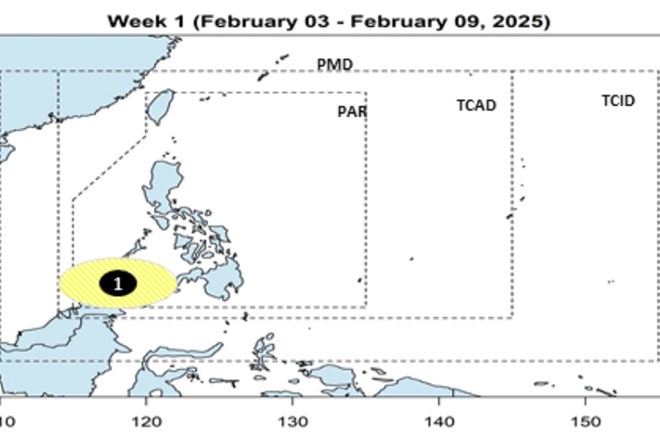The Joint Typhoon Warning Center (JTWC) forecast for February 5 said that a large weather disturbance area related to a long-standing low pressure area (Invest 92W) with a broad structure appeared southeast of Yap (Federated States of Micronesia) and Palau (850 km east of the Philippines from Palawan Island), with little significant change in organization.
Current environmental conditions are not particularly favorable for development, but are expected to become somewhat more favorable over the next few days. A tropical depression may form on February 6 as the system moves slowly and unsteadily west-northwestward.
The system is forecast to weaken into a trough by the weekend as it moves across Mindanao and the Central Visayas region of the Philippines. However, it could redevelop into a tropical depression as it moves back into the sea next week. The 7-day chance of it forming is 50%. The JTWC advises residents in the Philippines to monitor the system closely.
Previously, the storm and low pressure forecast on February 3 by the Philippine Atmospheric, Geophysical and Astronomical Services Administration (PAGASA) stated that during the week from February 3 to February 9, a new low pressure is expected to form near the Philippines.
A new low pressure system is likely to develop south of PAGASA's forecast area (PAR).
According to forecasters, this low pressure is located in the sea near the Philippines and is likely to enter the East Sea.

PAGASA forecasts that two to eight tropical storms may form within or enter PAR from January to June 2025.
February, March and April can have 1 storm each while May and June can have one or two disturbances.
On February 5, the JTWC also issued a strong wind warning in the Taiwan Strait (China), Luzon Strait and waters off northwestern Luzon due to strong northeast monsoon.
Strong winds also occurred in the waters around the Ryukyu Islands, including Okinawa (Japan). Along with that, a cold air mass extended from 30 degrees north latitude 122 degrees east longitude to 30 degrees north latitude 130 degrees east longitude, with a high pressure of 1028 hPa in China.
Cold air currents along the above coordinates are moving from China to the East Sea and the West Pacific.
The weather forecast bulletin of the Vietnam Center for Hydro-Meteorological Forecasting also said that on the day and night of February 6, the northeastern sea area of the North East Sea and the sea area from Khanh Hoa to Binh Thuan will have strong northeast winds of level 6, gusting to level 7-8; rough seas; waves 2-4 m high. Natural disaster risk level due to strong winds at sea: level 2.











